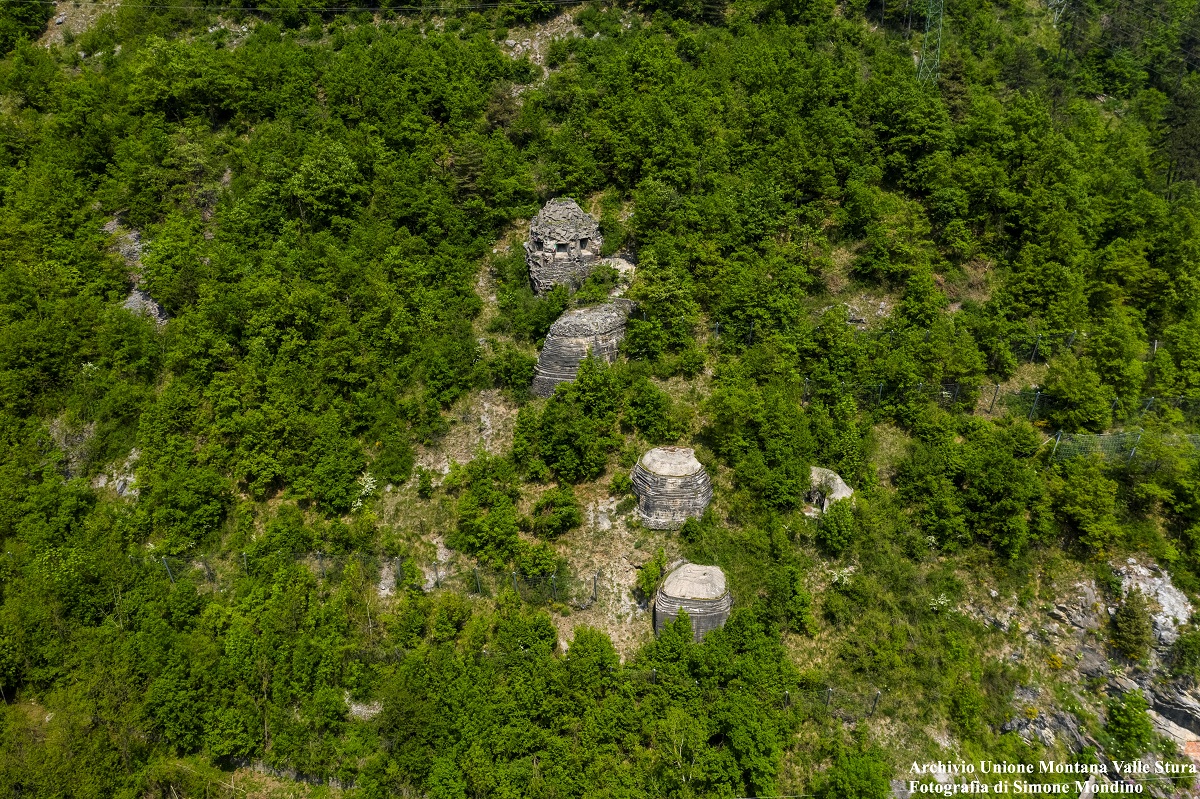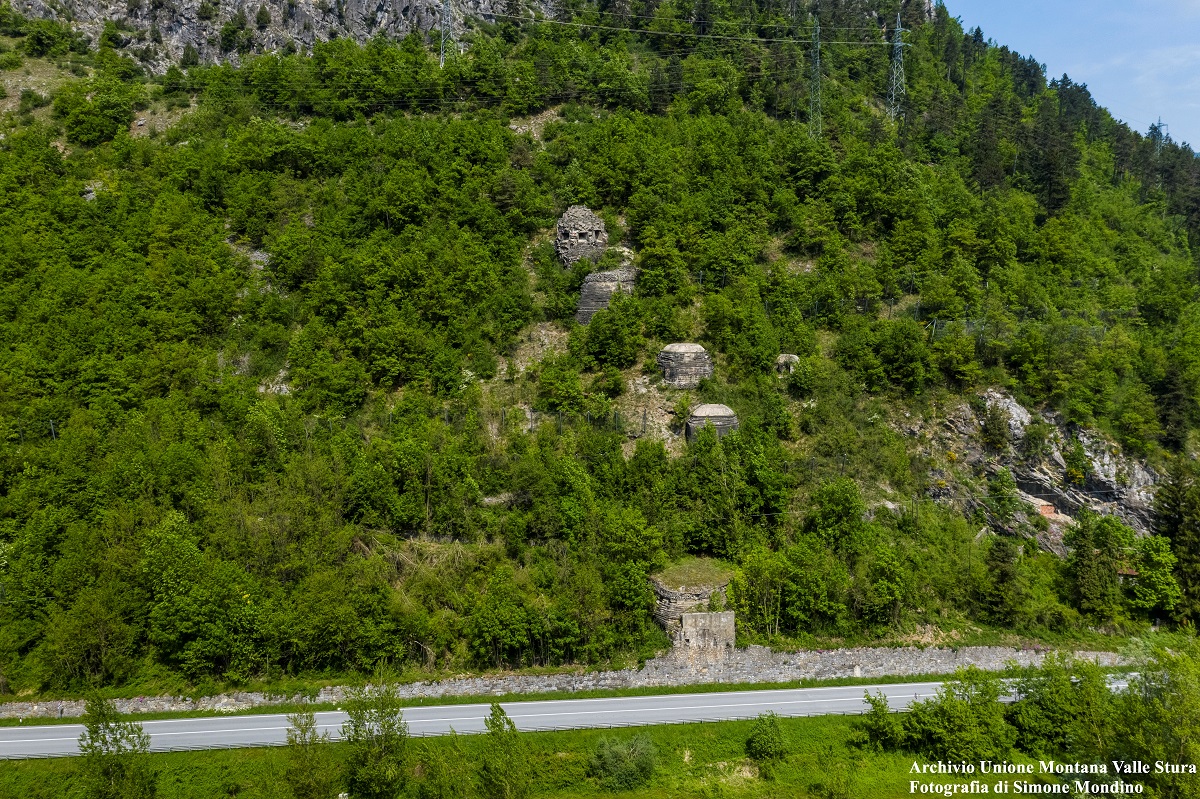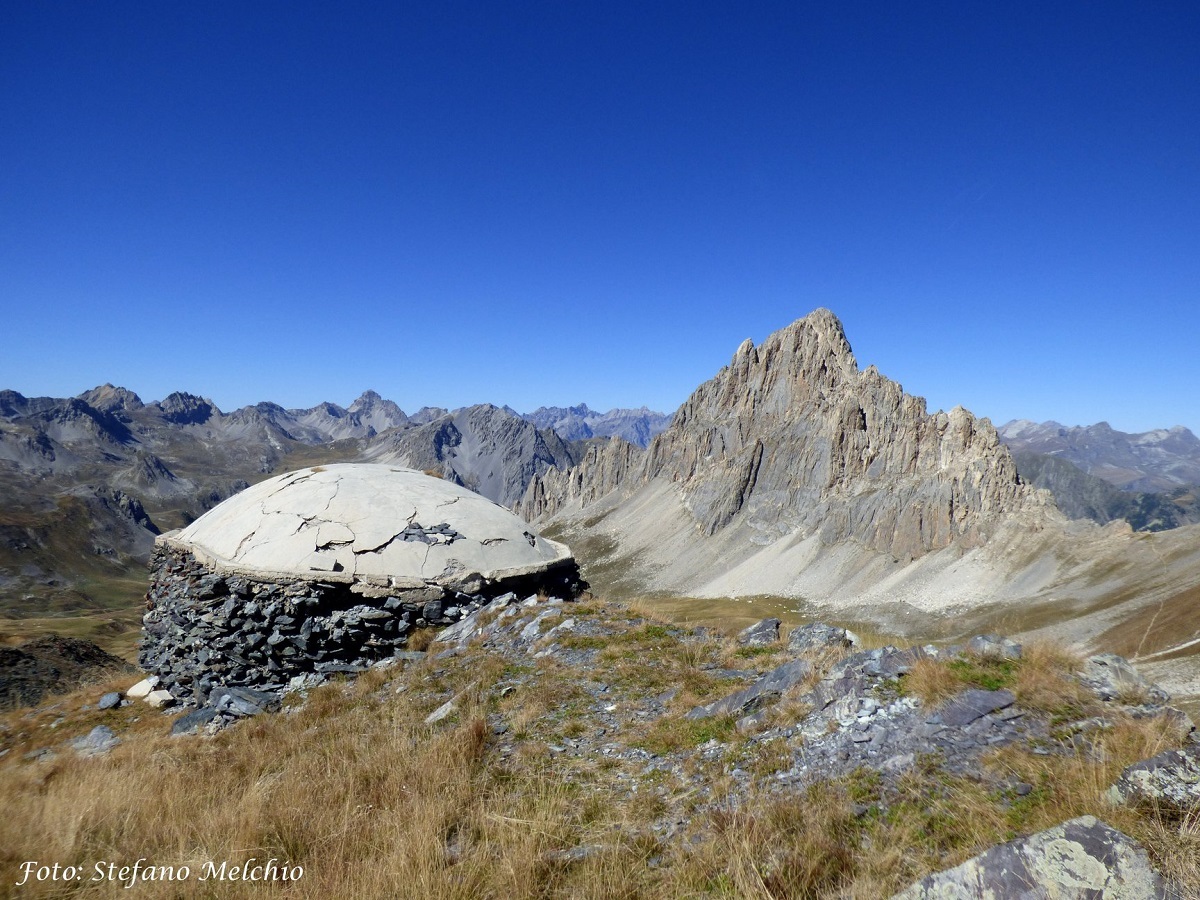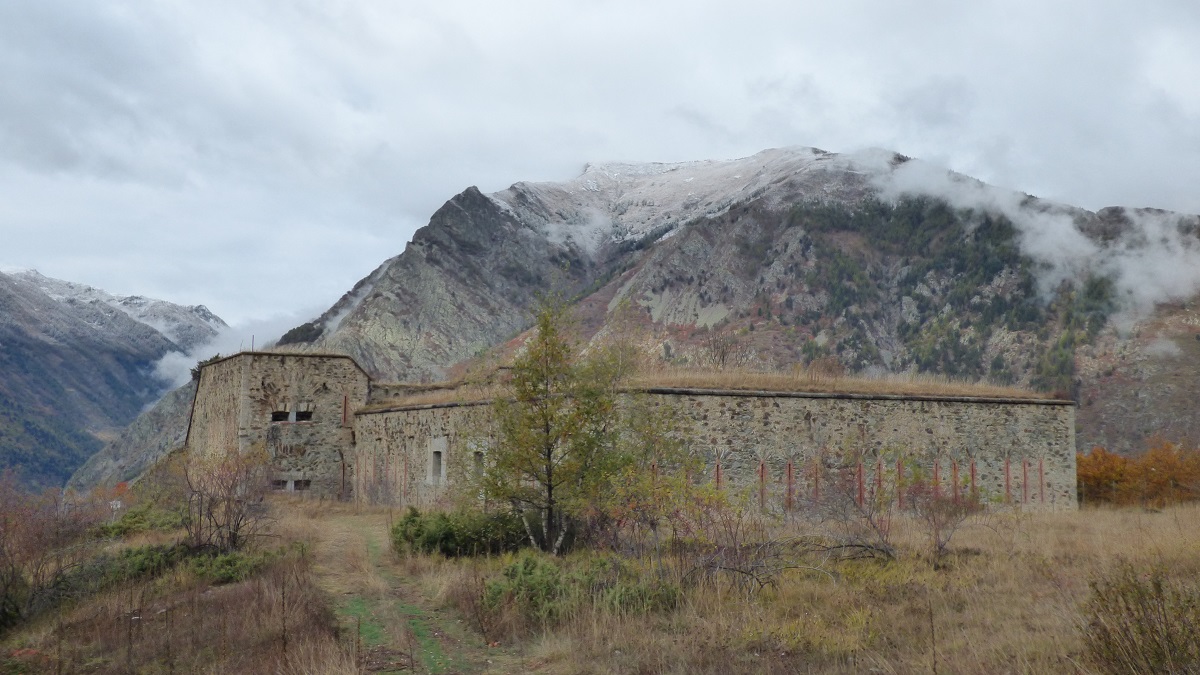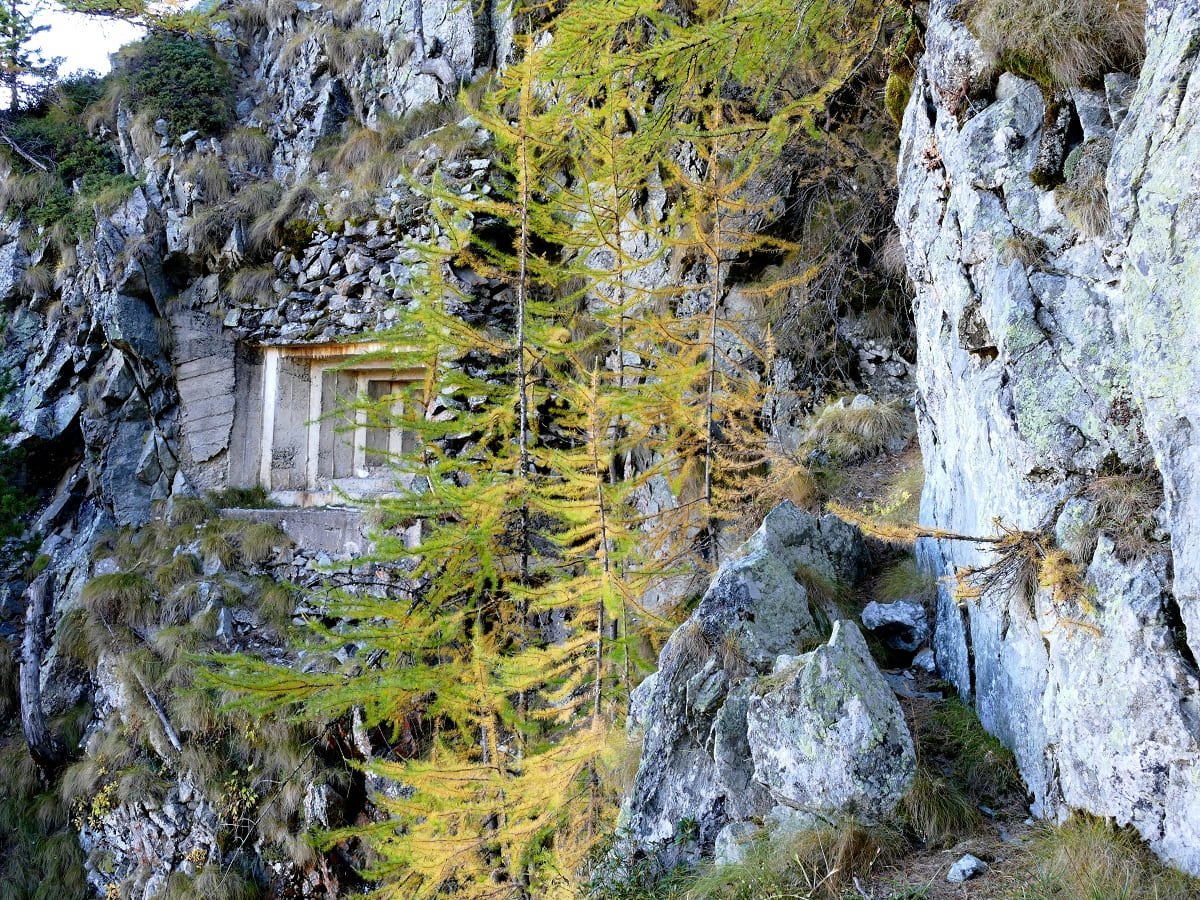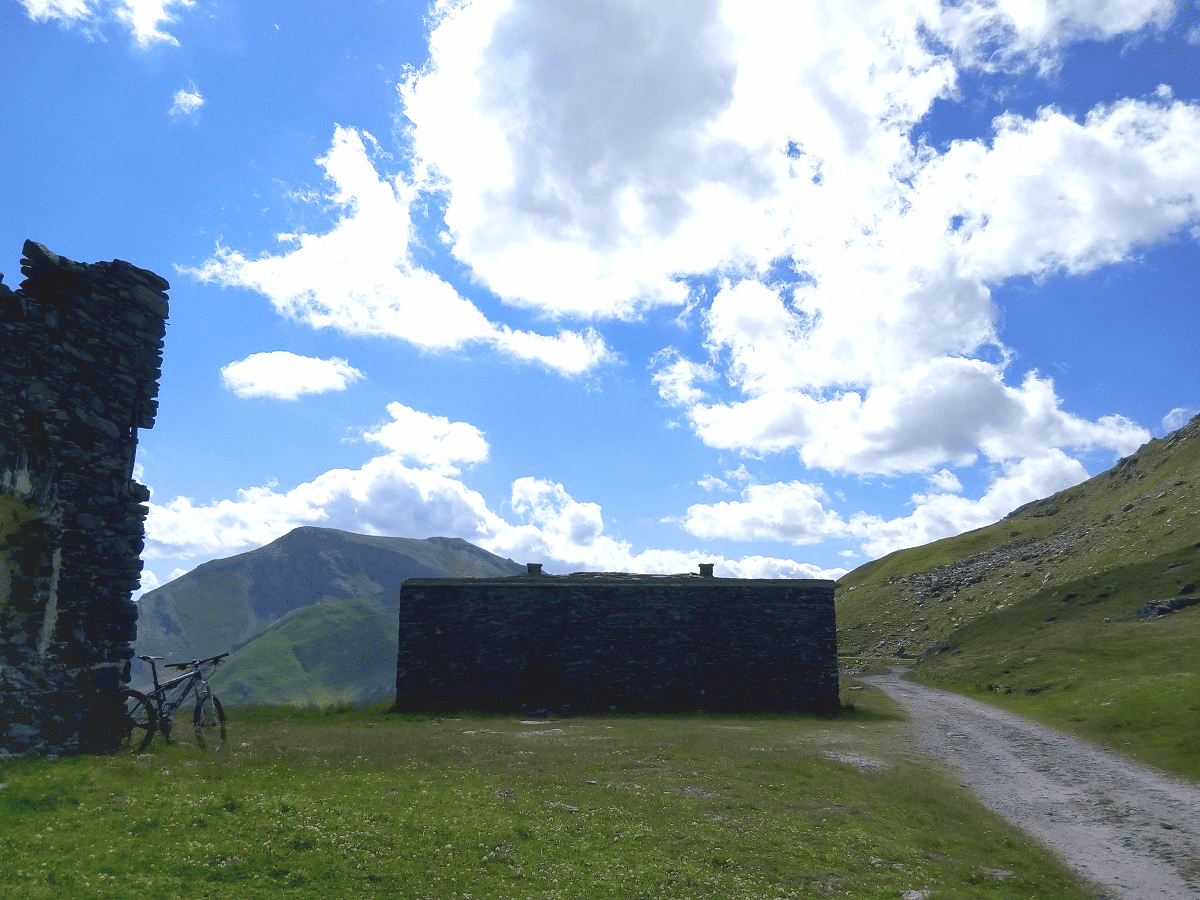The Vallo Alpino del Littorio is a system of fortifications built by Mussolini before the Second World War, also known as “Linea non mi fido”. This defensive system, built along the border of Northern Italy, served as protection to the neighboring states. Some of these fortifications, also called Opere, can be visited freely and allow you to touch one of the largest defense systems of the Second World War in our country.
THE LOWER VALLEY BARRIER – MOIOLA AND VALLORIATE
In the municipalities of Moiola and Valloriate there are several Opere built in the three years 1940-42.
Undoubtedly the most significant is Opera 5: in the surroundings of San Membotto there are others (Opera 4, 4 bis, 4 ter, 5 bis, 6, 6 bis and 7), as on the Colle di Valloriate (Works 8 and 9).
Opera 5 San Membotto was a cave work on several levels of altitude, equipped with block and periscope observers and had four entrances. Some parts of the work remained unfinished (gun posts) but was still used as a garrison. It is one of the largest works of Cuneo. The mortar block is the only one built in the western Alps. Staff barracks are located in front of the Opera.
COLLALUNGA VALLEY – SAN BERNOLFO, VINADIO
In the Collalunga valley, near Lake San Bernolfo, there are several fortifications built in the late 1930s.
The most important are the Works located at Lake San Bernolfo (Opera 12 and 13), the Artillery Shelter and the Cable Car Lake San Bernolfo – Collalunga.
The Artillery Shelter was a shelter for the storage of the four guns from one hundred of the battery placed on the peak north of Lake San Bernolfo, where a track reached the pitches (now become a botanical path). Along the road, just upstream of the shelter, there was a barrack for gunners, which was completely restored and became the refuge CAI De Alexandris Foches al Laus.
The Teleferica Lago San Bernolfo – Collalunga was a cableway for the transport of materials and supplies for the works of the area of Collalunga, consisting of an upper engine station and a lower return. Both were equipped with staff shelter, workshop and warehouse.
BECCHI ROSSI – MURENZ, PIETRAPORZIO
In the Becchi Rossi area there are fortifications built around the 1930s.
The most relevant are the Works placed at the Red Beak (Works 11, 12, 13, 14 and 15), the Murenz Observatory, the Cave Shelter A and the Cave for Photoelectric.
The Murenz Observatory was made of concrete with a large underground logistics sector and had two entrances. It would host the command of an infantry division and Frontier Guard troops in case of war.
Cave Shelter A was a shelter for 10/15 men. The Opera would shelter troops from an 81 mm mortar battery in the vicinity during the bombing.
The Cave for Photoelectric was a shelter to shelter a photoelectric (transportable outdoors through decauville), with the task of lighting the valley of Ferrere to detect possible attacks at night, but was never used.
COLLE DELLA BANDIA E GARDETTA – COLLE VALCAVERA, SAMBUCO
Near the Colle della Bandia and Colle Valcavera there are several Works built between the late nineteenth and the 1930s.
The most significant are the Works placed on the Colle Bandia (Opera 128, 131), the Shelters and the Trunes of the Bandia while on the Colle di Valcavera are the Casermetta and the Trune of Valcavera.
The Bandia Shelters and Trunes are a complex of trunes largely replaced, later, by a group of buildings constituting a large military encampment able to serve as a logistical base for mobile troops. A small part of these buildings was integrated, in 1939, in an ammunition depot, together with others, built further east towards the Colle di Valcavera and equipped with a fence wall.
The Casermetta and the Trune of Valcavera are a trune complex and in 1939 a modern barracks for 200 men was built further east.

